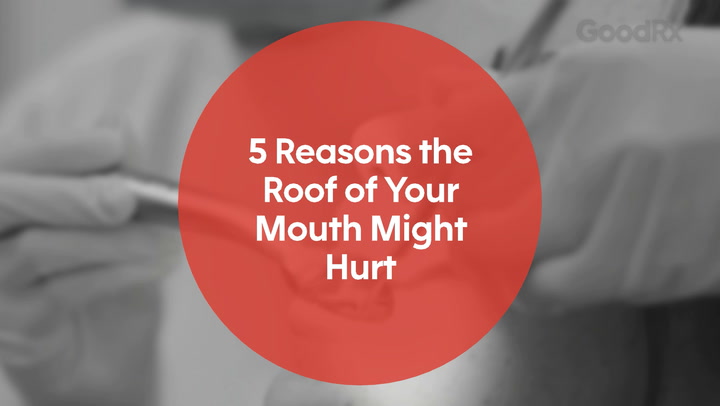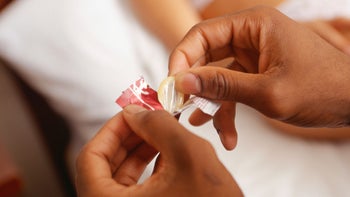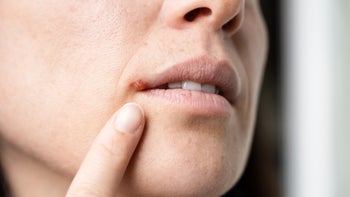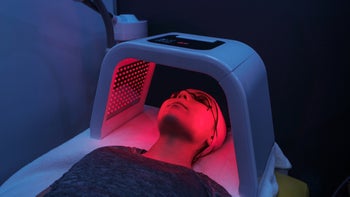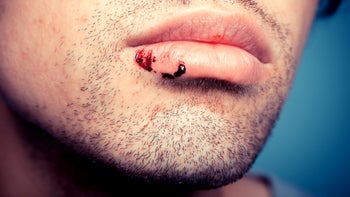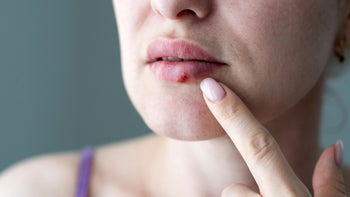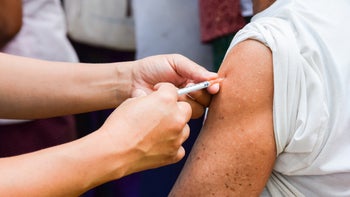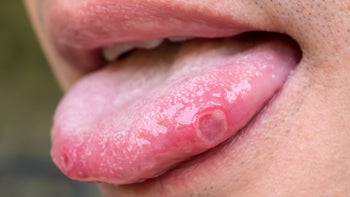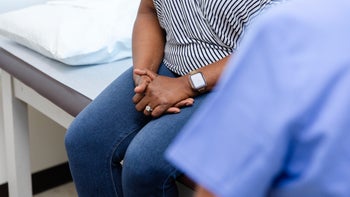
HSV1 and HSV2 Both Cause Herpes — Does the Difference Matter?
Key takeaways:
HSV-1 and HSV-2 are the viruses that cause herpes. HSV-1 most often affects the mouth, while HSV-2 most often affects the genitals.
HSV-1 is usually spread through saliva and direct contact. HSV-2 is typically spread through sexual intercourse.
Both HSV-1 and HSV-2 live inside the body forever, and can cause recurrent outbreaks throughout your lifetime. But outbreaks are more common with HSV-2 infection.

The herpes simplex virus (HSV) is a common virus that causes sores on the mouth and/or genitals. It includes two different viruses: HSV-1 and HSV-2. HSV-1 affects 67% of people under 50 around the world. It’s the most common cause of oral herpes. HSV-2 affects about 13% of people. It’s less common than HSV-1, but mainly causes genital herpes.
Since there are two versions of the virus, you may be wondering if it’s important to know exactly which type you have. In many ways, the symptoms and treatment are similar. But we’ll go through the differences that are important to know.
What are HSV-1 and HSV-2?
HSV-1 is a type of viral infection that usually causes cold sores or blisters in your mouth, lips, or tongue. These sores can be painful, but not always.
Search and compare options
HSV-1 was once called oral herpes because it was thought to cause infections only in the mouth and on the face. Now, HSV-1 is responsible for about half of all cases of genital herpes.
HSV-2 is another type of virus that causes herpes. It’s more commonly associated with genital herpes, which causes sores around the genital and anal areas. HSV-2 can also cause herpes in the mouth, but it’s less common.
How are HSV-1 and HSV-2 transmitted?
Both types of HSV are highly contagious. And their transmission is through direct contact. But this can look slightly different for each type of virus.
HSV-1 is usually spread through:
Saliva: The virus can be present in someone’s saliva even when someone doesn’t have any active symptoms or sores.
Contact with someone who has open sores: For example, kissing can pass the virus to someone’s mouth. And oral sex can pass the virus to someone’s genitalia.
Contact between your own sores and different parts of your body: This can happen if you touch your mouth and then touch your genitals or anal area.
Contact with a contaminated object: You can get HSV-1 by coming into contact with contaminated objects, such as drinks or razors. Although it’s important to note that this is much less common, since the virus doesn’t survive on surfaces for long.
High-contact sports: The virus can be transmitted while playing high-contact sports like rugby and wrestling.
A person with HSV-1 may not have any sores in the mouth or genital areas and still pass the virus to someone else. This is called asymptomatic shedding. When this happens the virus is most commonly spread through saliva.
Does your partner have herpes? Learn about the chances of getting herpes from your partner, and how you can prevent it.
Herpes outbreak timeline: Learn how long a typical herpes outbreak lasts — and what you can do to shorten it.
What is it like to have herpes? People share their experiences of overcoming the stigma associated with genital herpes.
HSV-2 transmission is similar. It’s usually spread by:
Direct contact with an open sore or blister from a person with the infection
Contact between your own sores and different parts of the body
Mother to child during birth
HSV-2 can also be spread when a person with the infection has no symptoms or visible sores. Asymptomatic shedding can happen through saliva or genital fluids.
What are the symptoms of HSV-1 and HSV-2?
Symptoms of either virus depend on where the infection happens.
Symptoms of oral herpes infection typically occur within 1 to 3 weeks from the time of infection:
Before you notice any sores or blisters, you may feel tired, lose your appetite, or even have a fever.
The first noticeable symptom is usually a cold sore or blister, which can form on the gums, lips, mouth, or throat.
Some people may also have a sore throat, or pharyngitis.
Symptoms may last up to 3 weeks before they completely resolve.
Symptoms of a genital herpes infection usually occur within 2 to 14 days from the time of infection. Symptoms include:
A decrease in appetite, muscle aches, and fever
Tender lymph nodes and pain with urination.
Before blisters appear, there may be tingling, burning, or itchy feelings.
Painful sores or blisters on the genitals, or around the anus.
Blisters typically last for 1 to 2 weeks and then go away.
Herpes can also occur in children. In children, HSV is usually caused by HSV-1:
Symptoms will likely appear 1 to 2 days after infection.
Some children experience a cold or flu-like illness before the sores are noticeable.
Sores and blisters typically form in clusters around the mouth and lips.
The sores typically last about 1 week.
HSV can live in the body for a long time without any symptoms after the initial infection. This can go on for years or even decades. But from time to time, the virus can become active and cause an outbreak. During outbreaks, symptoms will reappear in a similar location to the initial infection.
The frequency in which outbreaks happen vary from person to person. Outbreaks are more common in people with HSV-2 infection. If an outbreak happens, symptoms usually start with itching or burning in the area that the sores will appear. Symptoms are usually less severe and shorter in duration than the initial infection.
Many things can lead to an outbreak:
Increased stress, which can be emotional or physical
Pregnancy
Any type of illness
Sunlight can be a trigger for someone with oral herpes
How are HSV-1 and HSV-2 diagnosed?
There are two types of HSV testing that can be used to diagnose both types of herpes. These tests can also tell you if it’s HSV-1 or HSV-2.
A swab test
A licensed healthcare professional can swab an open sore to collect fluid and skin cells. This sample can then be used for:
A viral culture test: This test uses cells from the sample, then grows it in a lab to see if HSV is present. The result takes several days.
A PCR test: PCR is short for polymerase chain reaction. It tests for genetic material from the swab sample. It’s usually quicker than the culture.
Both of these tests are painless to complete, but an open sore or blister is needed for testing.
A blood test
The second test is a blood test, which looks for HSV antibodies. The body makes these antibodies in response to infection. It will make different antibodies for HSV-1 versus HSV-2. This test can be done with or without sores or blisters present. But it does require a blood draw, which can be uncomfortable for some people.
It’s also important to note that a person with HSV-2 has a higher risk for HIV infection. If you’re being tested for genital herpes, consider asking a healthcare professional for an HIV test. This can be done at the same time as a blood test for HSV.
How are HSV-1 and HSV-2 treated?
There’s no cure for HSV. So treatment is aimed at reducing the frequency and severity of outbreaks.
Antiviral medication is the most effective way to treat and prevent outbreaks. These prescription medications include:
Valacyclovir (Valtrex), which is taken 2 times a day
Acyclovir (Zovirax), which is taken 5 times a day
The duration of treatment depends on the severity of your infection. It also depends on whether it’s your initial infection or an outbreak.
Many people prefer valacyclovir since you only have to take it twice a day. But it’s often more expensive than acyclovir. Both medications are effective.
Most people take these medications whenever they get an outbreak. For people who experience frequent outbreaks, they can also take a lower dose all the time to prevent an outbreak from happening.
Antiviral medications treat the infection. But the following options can also help with pain:
A warm bath
Wearing loose clothing
Over-the-counter OTC pain medications
OTC creams
Scientists are also looking into vaccines to help prevent HSV or treat symptoms, but these are not yet available.
The bottom line
HSV-1 and HSV-2 are the viruses that cause oral and genital herpes. Both viruses are highly contagious, and can spread even when someone doesn’t have any active symptoms.
You don’t necessarily need to know exactly which type of the virus you have, although testing can provide this information. It’s more important to know your treatment options, which can help to manage symptoms and reduce outbreaks.
If you think you may have HSV, talk with your primary care provider about your sexual health. They can make sure you get the testing and treatment you need to keep you and your sexual partner(s) healthy.
Why trust our experts?


References
American Academy of Dermatology Association. (n.d.). Who gets and causes.
American Sexual Health Association. (n.d.). Five things you should know about herpes.
Cedars Sinai. (n.d.). Herpes simplex virus (cold sores) in children.
Centers for Disease Control and Prevention. (2024). About genital herpes.
Groves, M. J. (2016). Genital herpes: A review. American Family Physician.
Hammad, W. A. B., et al. (2021). Herpes simplex virus infection in pregnancy – an update. European Journal of Obstetrics and Gynecology and Reproductive Biology.
HIV.gov. (2024). Herpes simplex virus.
Mathew, J. Jr., et al. (2024). Herpes simplex type 2. StatPearls.
MedlinePlus. (2022). PCR tests.
MedlinePlus. (2023). Genital herpes.
MedlinePlus. (2023). Herpes–oral.
MedlinePlus. (2023). Herpes (HSV) test.
MedlinePlus. (2024). Swollen lymph nodes.
National Human Genome Research Institute. (2024). Antibody.
Planned Parenthood. (n.d.). Oral and genital herpes.
Planned Parenthood. (2023). Can herpes be dormant for 30 years?
Saleh, D., et al. (2023). Herpes simplex type 1. StatPearls.
ScienceDirect. (n.d.). Search results for viral pharyngitis.
World Health Organization. (2023). Herpes simplex virus.


